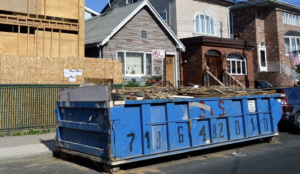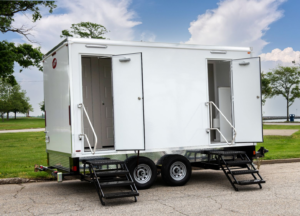HVAC Scranton PA systems provide comfortable temperatures for homes, offices and other buildings. They can be powered by either natural gas or electricity. They offer different brands and product tiers, so it’s important to research options before making a buying decision.
A qualified HVAC pro should be able to run the numbers and help you find a system that’s right for your budget. A high-efficiency system will have a higher upfront cost, but it can pay for itself in energy savings over time.

Heating and ventilation systems keep indoor air warm during the winter, cool and fresh during summer, and at a healthy level of humidity year round. They also provide filtration and removal of contaminants and help improve indoor air quality. These systems are vital to the comfort of homes, hospitals, retail stores, malls, schools, offices, airports and more. HVAC professionals are the people who work on these essential systems. They have extensive knowledge of the fundamentals and nuances of refrigeration, heating, ventilation and air conditioning and are capable of repairing and maintaining them.
To heat a home, an HVAC system can use gas or electric furnaces, or a combination of both. Some systems also have a heat pump component, which works differently from traditional air conditioners by grabbing warmth from the air outside and bringing it inside. This type of system can also be used to cool, but cooling is not its primary function in most homes.
In a traditional central air conditioning system, heated or cooled air is pushed through ductwork to all areas of the home via a series of vents and registers. This ensures that all areas of the home receive the same temperature, and it is an effective way to maintain a comfortable indoor environment. In addition, a centralized system usually provides better overall energy efficiency than a ductless alternative such as a mini-split system.
Ductless alternatives such as mini-split systems are not as efficient as a traditional central air system, but they may be a better choice for certain situations. These systems exchange air directly with the living space instead of circulating through a network of ducts, and they are also more affordable than traditional options.
All types of HVAC systems have pros and cons, and it’s important for homeowners to know the differences between them before making a purchase. This will allow them to choose the best option for their specific needs and situation. By learning about the different HVAC system types, costs, key terms and products, basic maintenance schedules, and more, homeowners can make the best decision for their home or business.
Cooling
The HVAC world can be intimidating, but it doesn’t have to be. Understanding how a home heating and cooling system works can help you make better decisions for your needs and budget. Here are some of the basics to get you started:
A central air conditioner is a type of HVAC system that uses ducts to deliver conditioned air throughout your home. Its components include an outdoor compressor unit, evaporator coil and fan. Inside, a blower motor pulls air over the cooling system’s components and conditions it before pushing it through your home’s ducts.
Many modern HVAC systems can also control humidity, which helps keep your home comfortable. The evaporator coil in the air conditioner condenses water vapor out of the air to lower your home’s humidity level. The moisture then gets carried away by the air conditioner’s drain line and sent outside.
Another key function of an HVAC system is regulating indoor air quality (IAQ). This is the term for the level of pollutants in your home’s air. Some of these contaminants include volatile organic compounds, which can be released from a wide variety of household cleaning products and other sources. These chemicals can negatively affect your health, so it’s important to limit your exposure as much as possible.
HVAC systems can help with this by filtering out these harmful chemicals. They can also increase ventilation to reduce the amount of contaminated air that remains inside your home’s walls and ceiling.
Before you hire an HVAC technician, check to make sure they have NATE certification, which stands for North American Technician Excellence. This qualification shows that they have passed an exam to prove their knowledge and skills in the field. They will be able to help you find the right heating and cooling system for your needs and make recommendations on how to maintain it correctly. They’ll also be able to diagnose problems and provide repairs as needed. This can help you save money on your energy bills and extend the life of your HVAC system. It’s best to have routine maintenance done every two to five years to catch any potential issues before they worsen.
Ventilation
Ventilation is the process by which fresh air is brought into a home or building and stale air is removed. The goal is to ensure a continuous flow of clean air throughout the space, improving indoor air quality and ensuring a healthy atmosphere.
There are several ways to ventilate a space, including natural, mechanical and hybrid ventilation systems. Natural ventilation involves opening windows and other areas to allow air to flow freely in and out of a building. This is an effective method, but it can be difficult when outdoor temperatures are too cold or too hot. Mechanical ventilation is accomplished through fans and vents that pull in air and push out stale air. A hybrid system combines natural and mechanical ventilation, giving you the best of both worlds.
Many residential forced air heating and cooling systems do not bring outdoor air into the house mechanically, relying on infiltration and natural ventilation to supply fresh air. However, advanced design features in new homes and some commercial buildings are starting to incorporate HVAC systems that bring outdoor air into the building through the HVAC system.
In most cases, the fresh air that enters your home or building through the air intake is then conditioned by the HVAC unit and directed into various rooms through a network of ducts and registers. Depending on the type of HVAC system, it may also be heated or cooled and have excess humidity removed before being directed into the room.
Air is drawn into the air handler through an air filter, which should be inspected and cleaned regularly. Once in the air handler, it is pushed over the evaporator coil and blower motor by the fan to be heated or cooled. It is then blown into the ductwork and through your home or building.
Ductless HVAC systems, such as mini-splits, offer an alternative to ductwork and are popular in certain situations. They offer a higher upfront cost, but they are easy to install and provide a great deal of flexibility. They are also more energy efficient, as only the rooms that are being used get heated or cooled, avoiding waste in unoccupied rooms.
Indoor Air Quality
In addition to regulating temperature and humidity, HVAC systems improve indoor air quality by reducing pollutants in buildings. These pollutants can be gases or particles. They include environmental tobacco smoke; asbestos from insulating and fire-retardant building supplies; formaldehyde from pressed wood products, restroom air fresheners, and paints, adhesives, and furniture finishes; organic compounds from cleaning materials, copying machines, and photographs and print shops; biological contaminants from water-damaged walls, ceilings, carpets, and furnishings; and pesticides from insecticides and other pest control products.
Some of these pollutants are immediately harmful; others may cause health problems that appear years after exposure. Some of these symptoms can be quite serious, including respiratory and heart disease and some cancers. Many of these conditions affect groups of people that are most vulnerable to pollutants, including children and elderly adults, those with existing respiratory or cardiovascular diseases, and those who are homeless or living in poverty.
The best way to avoid these health issues is to prevent them from occurring in the first place. This is especially important in homes. If possible, choose low-emitting building materials and furnishings, and ensure that your home has a ventilation rate that is high enough to dilute indoor pollution sources and carry away pollutants that accumulate at high levels.
For those who are building new homes or remodeling an old one, it is especially important to pay attention to these issues. Talk to the builder or architect about using a ventilation system that meets the standards of the American Society of Heating, Refrigerating and Air-Conditioning Engineers. Ask the builder to ensure that the home has an adequate supply of outdoor air, and to specify the use of building materials that are low-emitting.
If you suspect a problem, have an experienced professional check for radon and other pollutants. It is often more cost-effective to identify and eliminate the source of a problem, rather than monitoring for pollutants, which can be expensive. Besides radon, pollutants that are most commonly monitored in homes include carbon monoxide; volatile organic chemicals (VOCs); particulates; and molds and mildew. A recent study suggests that the air inside some buildings is more polluted than the outside air in many major cities.


